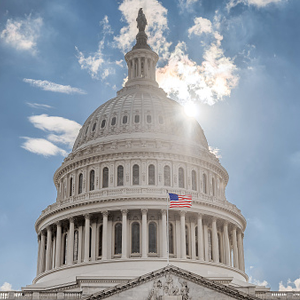Notice
Due to a lapse in appropriations, this website is not being updated.
Bureau of Economic Analysis
U.S. International Investment Position, 2nd Quarter 2025
The U.S. net international investment position, the difference between U.S. residents’ foreign financial assets and liabilities, was -$26.14 trillion at the end of the second quarter of 2025, according to statistics released today by the U.S. Bureau of Economic Analysis. Assets totaled $39.56 trillion, and liabilities were $65.71 trillion. At the end of the first quarter, the net investment position was -$24.65 trillion (revised).
Principal Federal Economic Indicators
Noteworthy
The Latest
U.S. International Investment Position, Fourth Quarter 2021
The U.S. net international investment position, the difference between U.S. residents’ foreign financial assets and liabilities, was –$18.10 trillion at the end of the fourth quarter of 2021, according to statistics released today by the U.S. Bureau of Economic Analysis (BEA). Assets totaled $35.21 trillion, and liabilities were $53.31 trillion. At the end of the third quarter, the net investment position was –$16.35 trillion.
U.S. International Investment Position, Fourth Quarter and Year 2021
The U.S. net international investment position (IIP), the difference between U.S. residents’ foreign financial assets and liabilities, was –$18.10 trillion at the end of the fourth quarter of 2021, according to statistics released today by the U.S. Bureau of Economic Analysis (BEA). Assets totaled $35.21 trillion, and liabilities were $53.31 trillion. At the end of the third quarter, the net investment position was –$16.35 trillion.
U.S. Current-Account Deficit Widens in 2021
The U.S. current-account deficit, which reflects the combined balances on trade in goods and services and income flows between U.S. residents and residents of other countries, widened by $205.5 billion, or 33.4 percent, to $821.6 billion in 2021. The widening mostly reflected an expanded deficit on goods. The 2021 deficit was 3.6 percent of current-dollar gross domestic product, up from 2.9 percent in 2020.
U.S. Current-Account Deficit Narrows in Fourth Quarter 2021
The U.S. current-account deficit, which reflects the combined balances on trade in goods and services and income flows between U.S. residents and residents of other countries, narrowed by $2.0 billion, or 0.9 percent, to $217.9 billion in the fourth quarter of 2021. The narrowing reflected a reduced deficit on secondary income and expanded surpluses on services and on primary income that were mostly offset by an expanded deficit on goods. The…
U.S. International Transactions, Fourth Quarter and Year 2021
The U.S. current-account deficit narrowed by $2.0 billion, or 0.9 percent, to $217.9 billion in the fourth quarter of 2021, according to statistics released by the U.S. Bureau of Economic Analysis. The revised third-quarter deficit was $219.9 billion. The fourth-quarter deficit was 3.6 percent of current-dollar gross domestic product, down from 3.8 percent in the third quarter.
Personal Income by State, 2021 (Preliminary)
State personal income increased 7.4 percent in 2021 after increasing 6.6 percent in 2020. In 2021, increases in earnings, transfer receipts, and property income (dividends, interest, and rent) contributed to personal income growth in all states and the District of Columbia. The percent change in personal income across all states ranged from 9.6 percent in Idaho to 4.5 percent in Vermont.
Personal Income by State, 2021 (Preliminary) and 4th Quarter 2021
State personal income increased 7.4 percent in 2021 after increasing 6.6 percent in 2020. In 2021, increases in earnings, transfer receipts, and property income (dividends, interest, and rent) contributed to personal income growth in all states and the District of Columbia. The percent change in personal income across all states ranged from 9.6 percent in Idaho to 4.5 percent in Vermont.
Arts and Culture Economy Declines 6.4 Percent in 2020
Arts and cultural economic activity decreased an inflation-adjusted 6.4 percent in 2020, after increasing 3.4 percent in 2019, according to statistics released today by the U.S. Bureau of Economic Analysis.
Arts and cultural economic activity accounted for 4.2 percent of gross domestic product (GDP), or $876.7 billion, in 2020, the Arts and Cultural Production Satellite Account shows.
Arts and Cultural Production Satellite Account, U.S. and States, 2020
The Arts and Cultural Production Satellite Account released today by the U.S. Bureau of Economic Analysis (BEA) shows that arts and cultural economic activity, adjusted for inflation, decreased 6.4 percent in 2020 after increasing 3.4 percent in 2019. Arts and cultural economic activity accounted for 4.2 percent of gross domestic product (GDP), or $876.7 billion, in 2020.
2021 Trade Gap is $861.4 Billion
The U.S. international trade deficit increased in 2021 according to the U.S. Bureau of Economic Analysis and the U.S. Census Bureau. The deficit increased from $676.7 billion in 2020 to $861.4 billion in 2021, as imports increased more than exports. The goods deficit increased $169.4 billion in 2021 to $1,091.4 billion. The services surplus decreased $15.3 billion in 2021 to $230.0 billion. The goods and services deficit was 3.7 percent of…




